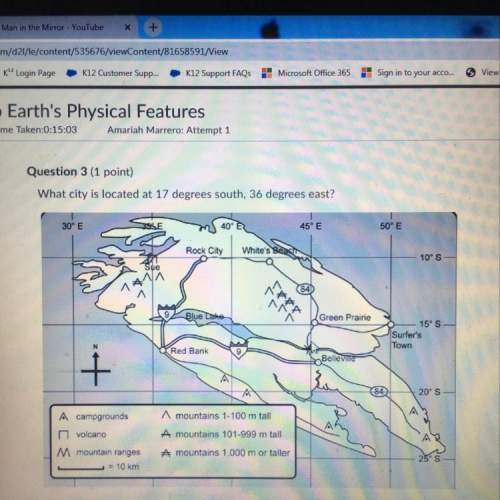
Chemistry, 02.07.2019 19:10 camirialchambers17
What is in bold is my data when i conducted the experiment and my question is can someone meon the percent yield which will report the percent yield of alcohol based off of the mass of my final (recrystallized) product (actual yield)
2.and also me on the provide a mechanism leads to the reaction product.
22.0 mmol (0.535g i weighed 3.465grams) of dry magnesium turnings is added into a clean and dry round-bottom flask . a set up for addition under reflux with a calcium chloride filled drying tube at the top of the reflux condenser is assembled. the magnesium is heated at a setting of 35-40 to allow the magnesium to dry and the reaction apparatus to warm sufficiently. 22.0 mmol of bromobenzene (3.454g i weighed it 3.465g) is weighed directly into a clean and oven-dried erlenmeyer flask. the bromobenzene is dissolved in 5.0 ml of anhydrous diethyl ether and the solution transferred to the addition funnel with a stopper . the heating source is removed from your reaction set-up and an iodine crystal is added to the round bottom flask containing the magnesium and the claisen adapter reconnected. a purple gas will fill the flask. the bromobenzene solution is added in one portion to the round bottom flask and the reaction mixture is observed for evidence of reaction such as a color change and the evolution of bubbles from the magnesium surface. a fresh portion of diethyl ether (6.5 ml) is added to the addition funnel.
once the reaction mixture has begun to boil (without heating), add the remaining 6.5 ml diethyl ether dropwise to the round bottom flask at a rate to maintain boiling. after addition of ether, allow the boiling to stop or slow significantly before gently warming to reflux . heat the reaction mixture under gentle reflux for an additional 15 minutes. the freshly prepared grignard reagent is very reactive and should be used immediately.
20.0 mmol (3.644g i weighed it 3.655g) of benzophenone is weighed into a dry erlenmeyer flask and dissolved in 10 ml of anhydrous diethyl ether. this freshly prepared solution is transferred to the addition funnel and the round bottom flask containing the grignard reagent cooled to room temperature. when the reaction mixture has cooled, the benzophenone solution is added dropwise to the round bottom flask with shaking or magnetic stirring. the reaction should generate enough heat for boiling of the ether once more. maintain an addition rate of benzophenone to keep the ether at a gentle boil without heat. once addition of the ketone is complete, maintain a gentle boil by the careful application of heat for 15 minutes.
cool the reaction mixture to room temperature and add 5.0 ml of distilled water dropwise using the addition funnel followed by a similar addition of 15 ml of 1.4 m hcl solution while stirring. continue stirring until all white solids have dissolved. store the reaction flask with the glass stopper in your drawer for 2nd part of the experiment.
if some unreacted magnesium pieces remain, remove by gravity filtration. transfer the reaction mixture to a separatory funnel, shake gently to mix the layers thoroughly, and then drain the aqueous layer. carefully wash the ether layer with 15 ml of 5% aqueous sodium bicarbonate. then wash it with 15 ml of saturated sodium chloride solution. dry the organic layer with magnesium sulfate and remove magnesium sulfate using a gravity filtration. then remove the solvent using the evaporator.
the product may be triturated (rub and grind) using 10 ml of hexanes and collected via vacuum filtration. the resulting crystals are washed with additional solvent and either air-dried or recrystallized (2: 1 hexane: ethanol) based upon your instructors directions. the triphenylmethanol crystals are dried (weighed 0.93g), weighed and the melting point(150-164; my meting point was 147-158).

Answers: 1


Another question on Chemistry

Chemistry, 22.06.2019 08:50
If two atoms are bonded to a central atom with no lone pairs,how will they be arranged
Answers: 3


Chemistry, 22.06.2019 12:10
Consider the reaction: n2(g) + o2(g) ⇄ 2no(g) kc = 0.10 at 2000oc starting with initial concentrations of 0.040 mol/l of n2 and 0.040 mol/l of o2, calculate the equilibrium concentration of no in mol/l how would this be done?
Answers: 3

Chemistry, 22.06.2019 13:00
Lab reagent, hypothesis test.a reference solution used as a lab reagent is purported to have a concentration of 5 mg/dl. six samples are taken from this solution and the following concentrations are recorded: (5.32, 4.88, 5.10, 4.73, 5.15, 4.75) mg/dl.these six measurements are assumed to be an srs of all possible measurements from solution.they are also assumed to have a standard deviation of 0.2, a normal distributin, and a mean concentration equal to the true concentration of the solution.carry out a significance test to determine whether these six measurements provide reliable evidence that the true concentration of the solution is actually not 5 mg/dl.
Answers: 1
You know the right answer?
What is in bold is my data when i conducted the experiment and my question is can someone meon the...
Questions




Mathematics, 12.12.2020 16:20

English, 12.12.2020 16:20

Mathematics, 12.12.2020 16:20

Mathematics, 12.12.2020 16:20



History, 12.12.2020 16:20

History, 12.12.2020 16:20

Mathematics, 12.12.2020 16:20




Mathematics, 12.12.2020 16:20







